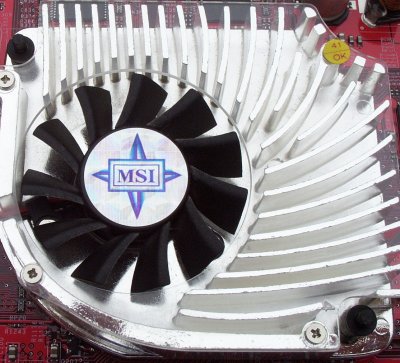The Card II
|
The cooler on the MSI Ti 4200 is the same one found on their Ti 4600. With it being identical, it also produces an identical sound in operation. Whilst not being bothersome, it is louder than we would have liked, noticeably louder than the Geforce3 series of cards' coolers. I personally run a quiet PC, therefore additional noise is most unwelcome. Temporarily stopping the fan highlighted just what noise it adds to my PC. Considering that the core is specified to run at 250MHz, I would have hoped for a quieter solution.
The left-hand-side of the MSI Ti 4200 is interesting. Unlike the bigger Ti 4600, the HD15 connection at the top of the above picture is not elongated, we've still to satisfactorily ascertain why that is the case with the Ti 4400/4600. Considering that this is in essence a budget card, the inclusion of VIVO functionality, via the Philips SAA7108E chip, is pleasing. Although it is comparatively basic compared to some competing solutions, the limited options also lead to simplicity with its ability to produce captures of up to 720x480. Appropriate software is provided of which we'll talk more about a little later. As with all Geforce4 Ti cards, we have a TV-Out (in this case, VIVO) and DVI output. The Silicon Image chip at bottom of the above picture serves as an external, second TMDS. It allows the DVI connector to display images up to 1920x1440 in resolution, giving true dual display support. Again, as with all Geforce4 Ti cards, the MSI Ti 4200 sports NVIEW, NVIDIA's in-house dual display program.
The back of the MSI Ti 4200 is standard fare. We see the HD15 connector on the left, the VIVO connector in the middle, and the now common DVI connector on the right. I'm happy to report that a DVI-to-VGA adapter is now included in the package. For what is essentially a budget card, the added value is laudable. |












